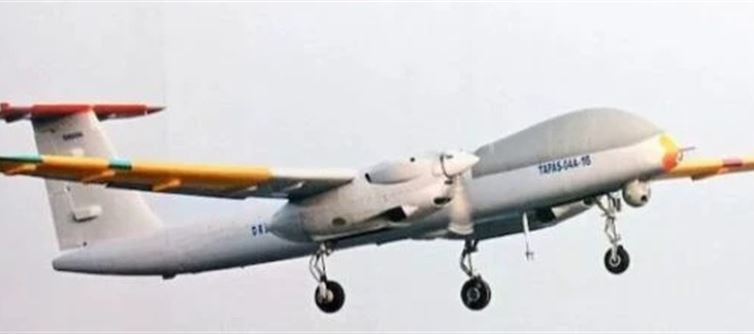
Details of Operation Sindoor, which india launched against pakistan more than a week ago in retaliation for the pahalgam terror incident, are now coming to light, including how india was able to outsmart and deceive its enemy.
The DRDO Lakshya unmanned aerial vehicles (UAVs) are said to have been responsible for the mission's success. The UAV was camouflaged as fighter jets that looked like MiG-29, Su-30, or Rafale aircraft. When india deployed them across the border on the evening of May 6-7, 2025, between 1:05 and 1:30 a.m. IST, the aircraft looked to the adversary like real jets.
How did pakistan respond?
The army's next move was to initiate a defensive reaction as the UAVs appeared to be jets on Pakistani radar. pakistan believed that an enemy plane had flown into its airspace. As a result, it activated its air defense systems, which included radar and HQ-9 missiles built in China. By doing this, pakistan unintentionally made public the locations of key military installations at air bases like Sargodha, Bholari, and Rafiqui, including radar stations, missile sites, and control centers.
Operating from indian airspace, the indian air Force (IAF) destroyed Pakistan's exposed air defense systems using Harop loitering missiles, often known as kamikaze drones. Following this, 11 Pakistani air bases (including Chaklala, Rafiqui, Bholari, and Muridke) and nine terror camps (including Jaish-e-Mohammed and Lashkar-e-Taiba facilities in Muridke, Bahawalpur, and Sialkot) were the target of precision strikes using BrahMos supersonic cruise missiles, Scalp, and Crystal Maze missiles.
The procedure took twenty-six minutes. During that period, 20% of Pakistan's air defense system was damaged by India. At Bholari, a surveillance aircraft, hangars, and runways were destroyed. Yusuf and Rauf Azhar were among the more than 100 terrorists who were slain. Pakistan claimed to have shot down ten Su-30s, fifteen MiG-29s, and twenty Rafales, but this was untrue. None of the indian pilots crossed the boundary; only dummy unmanned planes were utilized.
Why it's Historic for India?
India fooled Pakistan's air defenses with DRDO Lakshya drones, which resembled fighter jets (Rafale, Su-30, or MiG-29). India had never employed this strategy before. Pakistan's Chinese-made HQ-9 radars and missile systems were tricked into giving their positions by the fictitious aircraft. This allowed india to precisely strike those locations without endangering any pilots.
Using long-range missiles like BrahMos and Scalp, loitering bombs, and decoy drones, the indian air Force conducted the entire operation from indian territory. This demonstrated India's capacity to strike targets on the other side of the border without invading Pakistani airspace, which was crucial from a political and strategic standpoint. The action escaped harsh international censure because no indian pilots entered Pakistan. India's ability to strike from a safe distance was also shown.
Chinese technology Exposed
India demonstrated the shortcomings of Pakistan's air defense systems, which were manufactured in China. This gave china and pakistan a clear indication of India's military might. Additionally, as india did not send any pilots into Pakistani airspace, the exercise demonstrated that Pakistan's allegations of shooting down indian fighter jets were untrue. This enhanced India's standing globally.
India conducted the operation using imported Scalp and Crystal Maze missiles in addition to its indigenous Lakshya drones and BrahMos missiles. This demonstrated India's growing defense technology independence. The operation also showed advancements in military power by showcasing the air Force's use of contemporary drones, missiles, and real-time information.
The DRDO Lakshya unmanned aerial vehicles (UAVs) are said to have been responsible for the mission's success. The UAV was camouflaged as fighter jets that looked like MiG-29, Su-30, or Rafale aircraft. When india deployed them across the border on the evening of May 6-7, 2025, between 1:05 and 1:30 a.m. IST, the aircraft looked to the adversary like real jets.
How did pakistan respond?
The army's next move was to initiate a defensive reaction as the UAVs appeared to be jets on Pakistani radar. pakistan believed that an enemy plane had flown into its airspace. As a result, it activated its air defense systems, which included radar and HQ-9 missiles built in China. By doing this, pakistan unintentionally made public the locations of key military installations at air bases like Sargodha, Bholari, and Rafiqui, including radar stations, missile sites, and control centers.
Operating from indian airspace, the indian air Force (IAF) destroyed Pakistan's exposed air defense systems using Harop loitering missiles, often known as kamikaze drones. Following this, 11 Pakistani air bases (including Chaklala, Rafiqui, Bholari, and Muridke) and nine terror camps (including Jaish-e-Mohammed and Lashkar-e-Taiba facilities in Muridke, Bahawalpur, and Sialkot) were the target of precision strikes using BrahMos supersonic cruise missiles, Scalp, and Crystal Maze missiles.
The procedure took twenty-six minutes. During that period, 20% of Pakistan's air defense system was damaged by India. At Bholari, a surveillance aircraft, hangars, and runways were destroyed. Yusuf and Rauf Azhar were among the more than 100 terrorists who were slain. Pakistan claimed to have shot down ten Su-30s, fifteen MiG-29s, and twenty Rafales, but this was untrue. None of the indian pilots crossed the boundary; only dummy unmanned planes were utilized.
Why it's Historic for India?
India fooled Pakistan's air defenses with DRDO Lakshya drones, which resembled fighter jets (Rafale, Su-30, or MiG-29). India had never employed this strategy before. Pakistan's Chinese-made HQ-9 radars and missile systems were tricked into giving their positions by the fictitious aircraft. This allowed india to precisely strike those locations without endangering any pilots.
Using long-range missiles like BrahMos and Scalp, loitering bombs, and decoy drones, the indian air Force conducted the entire operation from indian territory. This demonstrated India's capacity to strike targets on the other side of the border without invading Pakistani airspace, which was crucial from a political and strategic standpoint. The action escaped harsh international censure because no indian pilots entered Pakistan. India's ability to strike from a safe distance was also shown.
Chinese technology Exposed
India demonstrated the shortcomings of Pakistan's air defense systems, which were manufactured in China. This gave china and pakistan a clear indication of India's military might. Additionally, as india did not send any pilots into Pakistani airspace, the exercise demonstrated that Pakistan's allegations of shooting down indian fighter jets were untrue. This enhanced India's standing globally.
India conducted the operation using imported Scalp and Crystal Maze missiles in addition to its indigenous Lakshya drones and BrahMos missiles. This demonstrated India's growing defense technology independence. The operation also showed advancements in military power by showcasing the air Force's use of contemporary drones, missiles, and real-time information.




 click and follow Indiaherald WhatsApp channel
click and follow Indiaherald WhatsApp channel